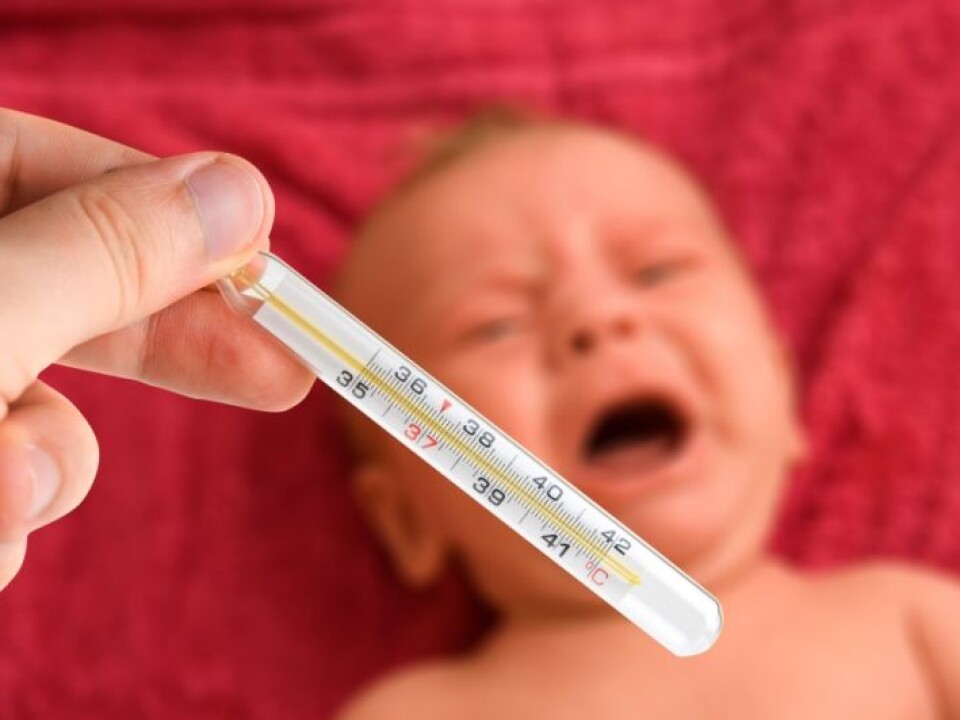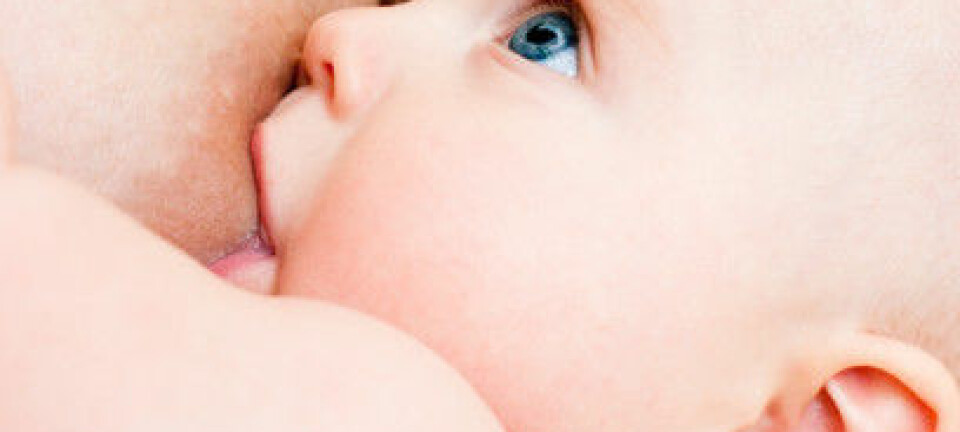
Breast milk is safe
Breast milk contains contaminants. But a thorough analysis of relevant research shows that the benefits of breastfeeding clearly outweigh the potential risks.
Denne artikkelen er over ti år gammel og kan inneholde utdatert informasjon.
Many, many studies show that mother’s milk is healthy for infants. Reams of research document how breastfeeding is associated with lower risks of several child health problems and diseases.
Yet we’ve known for decades that environmental pollutants such as DDT, PCB and dioxins contaminate breast milk.
On the whole, then, is it good for mothers to nurse their children, or isn’t it?
The Norwegian Scientific Committee for Food Safety (VKM) says "yes". The answer is based on the results of a review of pertinent research the committee conducted called “The Benefit and Risk Assessment of Breast Milk for Infant Health in Norway”.

The committee concluded that the health promoting aspects of breast milk definitely eclipse the risk of damage caused by contaminants in the milk.
“The Committee thinks that current levels of breast milk contaminants represent a small risk for children who are breastfed up to the age of one year,” said Helle Margrete Meltzer, who led the assessment and presented the results.
The conclusion applies whether the baby is fed breast milk exclusively, or breast milk and some solid foods, to the age of six months. It also applies when babies are fed the combination of breast milk and solid foods up to the age of 12 months.
Protective substances
Breast milk is the perfect food for babies in the first months of their lives. With the exception of vitamin D, it contains all the nutrients an infant needs. The same can be said for infant formula – breast milk substitute.
The special advantage of breast milk is that it contains a number of specialised components that Meltzer calls protective substances.
These are various substances that protect the baby from infections in the stomach, intestines and elsewhere and that boost the maturation of the infant’s immune system. Meltzer points out that infant formula lacks these particular substances.
“Breast milk is brilliant. It really dawned on me in the course of this work,” she said.
Protective, but not for allergies
Meltzer and six other experts have studied Norwegian and international summaries of research on the positive effects of breast milk. The material has given them insights into some definite effects and some possible effects.
The group concludes there is a convincing link between an infant’s being fed breast milk and enjoying healthy neurological development and higher intelligence. The same can be said for reductions in risks of gastrointestinal, middle ear and respiratory infections.
The group also found convincing information for claims that breastfeeding reduces the risk of overweight and obesity during childhood, but that there are not enough data to say whether this advantage lasts into adulthood.
Mother’s milk is also likely to protect against diabetes types 1 and 2 and hypertension.
The research material also gave indications that breast milk can have a positive effect on Crohn’s disease, ulcerative colitis, childhood cancer, sudden infant death syndrome, but the connections were less certain.
The evidence is limited and no conclusion could be drawn for a possible protective effect of breast milk on the develpment of asthma and wheezing, allergies and atopic dermatitis.
Small risk
The group has done a huge job digging up and evaluating scientific articles that shed light on the link between contaminants in mother’s milk and health problems.
They found sufficient data to evaluate the effects that PCB, dioxins, DDT/DDE, HCB and mercury in breastmilk can have on infants.
Meltzer and her colleagues found no convincing or probable link between these contaminants in breastmilk and damage to a child’s health.
However, the research material did suggest that these pollutants in the milk can have a negative effect on a baby’s neurological development. But the studies showed the adverse effects appeared to be temporary.
Meltzer says the levels of these contaminants in Norwegian women’s breast milk are far below the average in reported in international studies. In many instances the Norwegian levels are even way below the levels that were investigated in international studies and deemed safe.
It should be noted that levels of many contaminants in breast milk and the environment have dropped considerably since the 1980s.
Meltzer was glad to see that the international bans on compounds such as DDT and PCB have had a sweeping effect.
On the downside, the monitoring of contaminant concentrations over the past few decades shows that today’s young adults probably received much larger amounts of these contaminants than today’s babies get.
Unanswered questions
Henriette Øien of the Norwegian Directorate of Public Health thinks the group has done a painstaking job and provided answers to key questions about breastfeeding.
But there are still some limits to VKM’s report.
Meltzer stresses that new contaminants have appeared on the scene in recent years and we know too little about them. Nor have the researchers looked into the effect of relatively natural substances that can be found in breast milk, such as caffeine from coffee and tea, or substances from tobacco, alcohol or narcotics.
The report does not say whether the positive effects of breastfeeding apply when babies are being fed combinations of breast milk, supplement and baby food and porridge – or what percentage of an infant’s food has to be breast milk for the benefits to apply. Nor is there enough data to determine anything about the positive and negative effects of breastfeeding for over a year.
Despite such unanswered questions about the health effects of breastmilk, one conclusion is clear following this analysis.
Scientists say it is generally safe to breastfeed an infant.
Translated by: Glenn Ostling

































